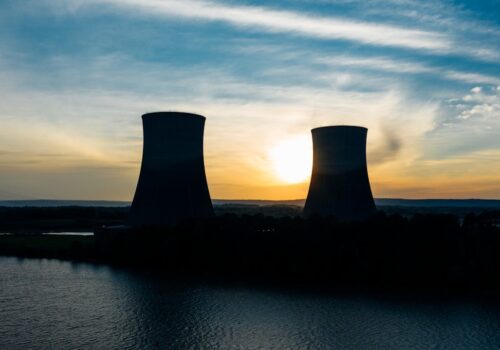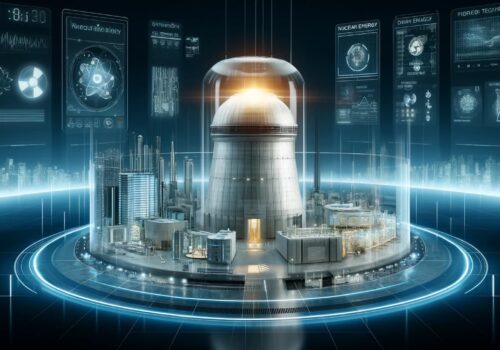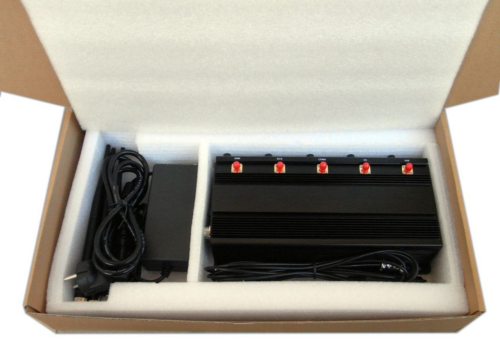Wireless Network Vulnerabilities in Nuclear Energy: Assessing the Need for WiFi Jammers
With the increasing reliance on wireless technology in modern industrial environments, the nuclear energy sector is no exception. Wireless networks have become integral to various operations within nuclear facilities, streamlining communication and data transmission and enhancing overall efficiency. However, this advancement comes with its share of concerns, particularly regarding cybersecurity vulnerabilities. The potential threats posed by malicious actors targeting wireless networks in nuclear energy settings raise questions about the effectiveness of existing security measures.
This article delves into wireless network vulnerabilities in nuclear energy and aims to assess the feasibility and necessity of deploying WiFi jammers as a potential countermeasure. While WiFi jammers have been discussed in other contexts, their application in susceptible environments like nuclear facilities necessitates careful examination. By evaluating the potential risks and consequences of wireless network breaches, we can better understand whether WiFi jammers offer a viable solution to enhance security and protect critical infrastructure.
Assessing the Impact of Wireless Network Vulnerabilities
Wireless network vulnerabilities can have far-reaching consequences, especially in critical sectors such as nuclear energy. Assessing the impact of these vulnerabilities is vital to understanding the potential risks and formulating effective mitigation strategies. In this section, we will delve into the various aspects of wireless network vulnerabilities’ impact in nuclear energy settings.
Wireless networks are crucial in monitoring and controlling various processes within nuclear facilities. If these networks are compromised, it could lead to inaccurate or delayed data transmission, hindering real-time monitoring and response. As a result, the safety of personnel working in these facilities may be compromised, and the risk of accidents or incidents could increase. Moreover, if unauthorized access to critical systems occurs, there is a potential risk of unauthorized control, potentially endangering both facility staff and the general public.
A successful cyber-attack on a wireless network in a nuclear facility can have severe implications for critical infrastructure. For instance, a hacker accessing control systems could manipulate processes, leading to equipment malfunctions or shutdowns, disrupting power generation or other essential operations. The consequences could range from operational downtime and financial losses to long-term damage to equipment and infrastructure.
Wireless network vulnerabilities can expose nuclear facilities to data breaches, allowing unauthorized access to sensitive information. This may include proprietary research data, intellectual property, or confidential operational details. Such information falling into the wrong hands could lead to intellectual property theft, corporate espionage, or even ransom demands, potentially jeopardizing the competitive edge and reputation of the facility.
WiFi Jammers: A Potential Solution?
The idea behind using WiFi jammers is to prevent unauthorized access and cyber-attacks that exploit vulnerabilities in wireless networks. However, deploying WiFi jammers in critical sectors like nuclear energy raises several essential considerations:
- Enhancing Network Security: WiFi jammers can be viewed as a particular security layer to reduce wireless-based attacks.
- Protection against Insider Threats: Insider threats pose a significant risk to nuclear facilities, as authorized personnel with malicious intent can exploit wireless networks.
- Rapid Response to Emergencies: In an imminent cyber-attack or security breach, WiFi jammers can be activated quickly to isolate affected areas and limit the extent of the attack.
- Legality and Regulatory Compliance: Deploying WiFi jammers raises legal and regulatory considerations. In many jurisdictions, jamming devices are strictly regulated or prohibited due to potential interference with essential communications, such as emergency services or public safety networks.
- Ethical Concerns: WiFi jammers involve deliberate disruption of wireless communication, which can impact malicious actors and innocent users within the affected area.
- Jamming Effectiveness: While WiFi jammers can be effective against specific wireless attacks, determined adversaries may employ sophisticated methods to bypass or overcome jamming.
- Integration Challenges: Integrating WiFi jammers into security infrastructure requires careful planning and coordination. Facilities must consider how to implement and manage jamming devices without disrupting normal operations or inadvertently causing unintended consequences.
WiFi jammers can enhance wireless network security in nuclear energy and other critical sectors. However, their deployment must be cautiously approached, considering legal, regulatory, ethical, and technical considerations.
Current Security Measures in Nuclear Facilities

Nuclear facilities implement a comprehensive set of security measures to safeguard their critical infrastructure and prevent unauthorized access, including measures specific to wireless network security. These security measures are designed to mitigate potential threats and ensure the safety of personnel, the public, and the environment.
The goal is to maintain the highest levels of security and safety in nuclear facilities and deter potential threats effectively. As the threat landscape evolves, continuous evaluation and improvement of security measures are essential to ensure the resilience of nuclear energy infrastructure.
Perspectives of Using WiFi Jammers
The perspectives on using WiFi jammers are diverse and multifaceted. While some view them as a potential security tool to enhance protection in critical environments, others raise significant ethical, legal, and practical concerns. To make informed decisions, stakeholders must carefully consider WiFi jammers’ benefits, risks, and potential trade-offs in securing wireless networks in nuclear energy and other critical sectors. If considered, the implementation of WiFi jammers should be part of a comprehensive security strategy that addresses the evolving cybersecurity landscape and the unique challenges of the respective nuclear facilities.




